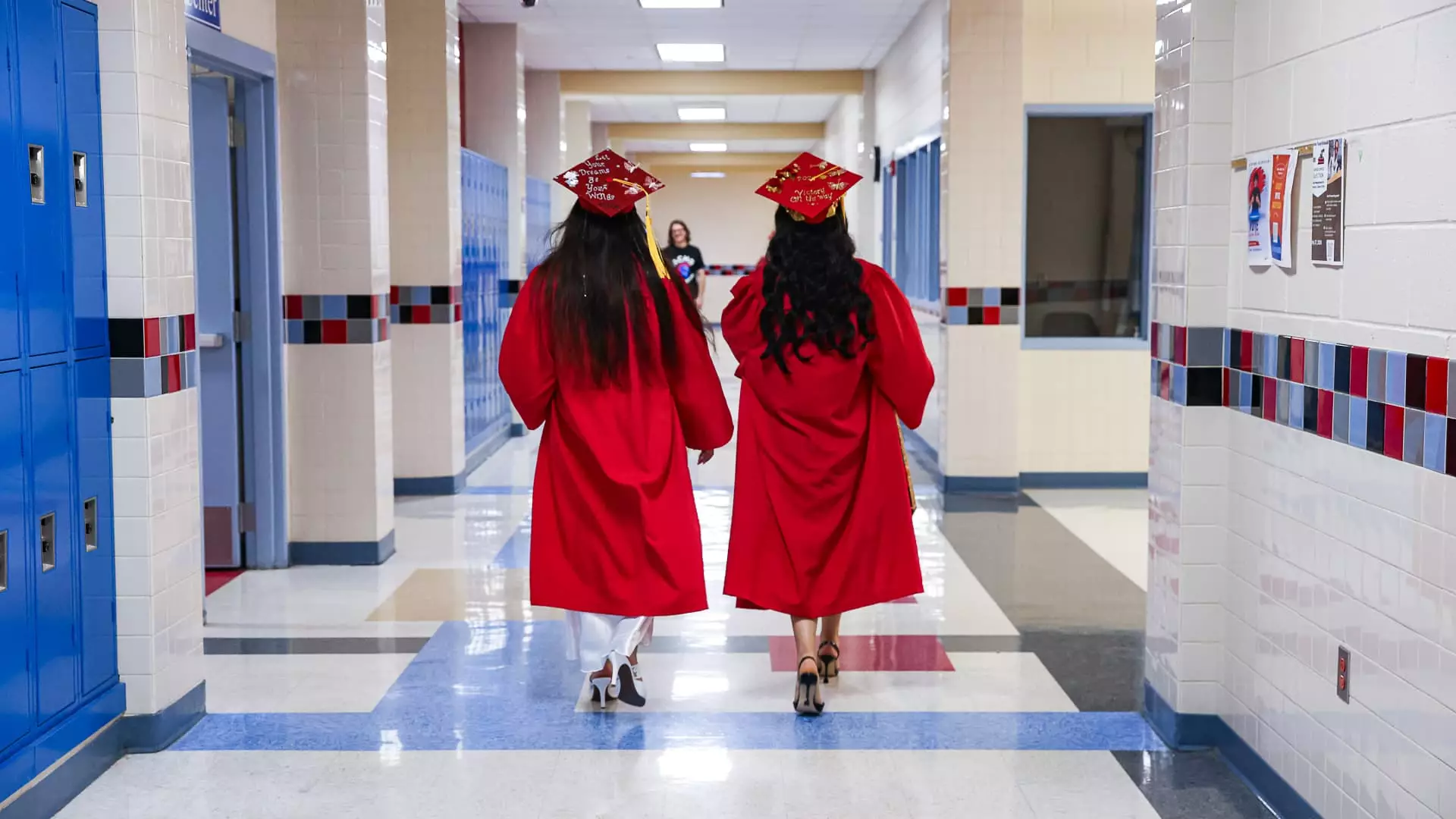The U.S. education financing system is embroiled in a crisis that is not only disheartening but fundamentally unsustainable. The Department of Education is poised to recommence collections on federally-backed student loans that are already in default, a troubling move that comes as new high school graduates gear up to accumulate their student debt. Around 42 million Americans currently wrestle with federal student loans, and more than a million recent high school seniors are expected to take on new financial burdens for their education. By the time they don their caps and gowns, these individuals may owe, on average, a staggering $40,000—a grim reflection of the rising costs of higher education, as highlighted by recent studies from experts like Mark Kantrowitz and NerdWallet.
This incessant surge in student debt raises a profoundly unsettling question: is this heavy financial burden just a necessary evil in the quest for a college education? The answer is a resounding no. We are witnessing a peculiar paradox where students are entering an education system laden with promises yet exiting with financial shackles. The chronic escalation of tuition costs now surpasses inflation, with figures indicating an annual growth rate of 5.6% since 1983. For many families, this means shouldering nearly half of the costs of higher education, forcing them to take on untenable debt burdens that will haunt them long after graduation.
The Empty Pledges of Higher Education
In a scathing op-ed, Education Secretary Linda McMahon pointed to a troubling trend: institutions of higher learning are making hollow promises while financially profiting off the very students they claim to support. This commentary illuminates a systemic flaw in the funding model of higher education—a sector that masquerades as nonprofit while accruing massive endowments and hiking tuition rates to match their financial ambitions. This betrayal is not merely a policy failure; it strikes at the core of what education ought to represent. Instead of being a ladder to success, it has morphed into a weight that many will struggle to lift throughout their lives.
There’s a harsh irony here: public funding for higher education has drastically decreased over the decades, effectively shifting the burden onto students and their families. Not only do families bear a staggering 48% of the costs, but the consequence of this shift has led universities to rely increasingly on tuition as their primary revenue stream. The educational model is perverse: educational institutions are thriving financially while students are left to navigate an ocean of debt. The current landscape fosters a system where the pursuit of knowledge becomes synonymous with financial ruin.
A Flawed System—A Call to Change
Surely, we have reached a critical juncture where action is required. With the estimated $1.6 trillion in outstanding student debt—a figure that is ballooning with each passing year—we can no longer afford to ignore the pressing reality that student loans are fast becoming the nation’s next economic crisis. Unlike previous generations, today’s college students will likely graduate with financial burdens that dwarf the costs incurred by their parents and grandparents. This does not merely reflect the state of the economy but encapsulates a flawed philosophy that equates education with debt.
Even with historic attempts at student loan forgiveness under the Biden administration, the broader systemic inadequacies remain unaddressed. There seems to be a peculiar inertia in tackling the college affordability crisis, and stakeholders are simply playing a game of pass-the-buck. Instead of focusing on the root causes, universities, policymakers, and even families are embroiled in a cycle of borrowing that only exacerbates the issue.
Education should function as a beacon of opportunity, not a pathway to prolonged financial distress. It is imperative that we push for comprehensive reforms that not only tackle tuition costs but also rethink the fundamental ways in which we finance the education of our youth. The prospects of a society that invests in its students—as opposed to shackling them with debt—are not merely idealistic; they are essential for our nation’s future prosperity. Our students deserve more than empty promises; they deserve a real chance at success free from the burdens of financial distress.

Leave a Reply